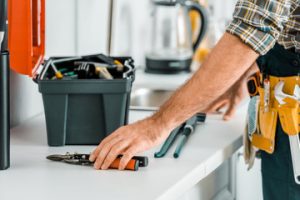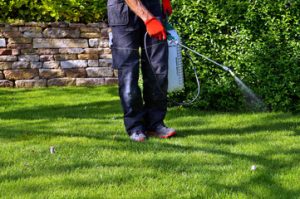Rosenberg Plumbing is an essential technology, ensuring access to clean drinking water and safe waste disposal. Its history dates back to ancient civilizations grappling with water management problems. Today, plumbers must pass certification courses and obtain local permits to work professionally.

Plumbing involves pipes, fixtures, and fittings that deliver fresh water and remove wastewater in a building. The system includes a water supply, a water meter, valves, and traps. It also includes drain pipes that direct sewage to the municipal sewer line or septic tank.
Plumbing is a crucial part of the human habitat, providing clean water for drinking and bathing. It also removes waste to maintain a sanitary environment. Proper plumbing systems are essential for ensuring safe and sustainable living, but they can encounter problems from time to time. Fortunately, these issues can be resolved with the help of a professional plumber.
Plumbing encompasses the pipes and fixtures that transport water to and from sinks, toilets, bathtubs, showers, dishwashers, and other appliances in homes and businesses. It includes the specialized network that delivers fresh water and drains wastewater and sewage to a sewer system or septic tank.
The plumbing industry is regulated by both federal and state agencies, which set standards for water quality, safety, and sanitation. These regulations govern the design, installation, and maintenance of plumbing systems. For example, the EPA sets standards for lead content in plumbing materials and outlines procedures for identifying and fixing contamination sources. State laws regulate licensing and inspection requirements for plumbers.
A working knowledge of the principles of plumbing is essential for designing, building, and maintaining plumbing systems. This knowledge can help reduce the risk of costly errors, unforeseen complications, and unnecessary expenditures. For example, a plumber can anticipate and prepare for potential problems by understanding the common causes of plumbing issues such as dripping faucets, running toilets, and slow drains.
Plumbing systems are complex, but they’re also indispensable for modern life. Whether you’re a homeowner or business owner, proper plumbing is critical for your health and well-being.
Understanding how your plumbing system works can help you avoid costly repairs and keep your home or office running smoothly. The complexities of your plumbing are hidden from view, but they’re based on simple principles like gravity and water seeking its own level. Knowing these principles can help you make better choices about your water use and reduce your environmental impact. For instance, you can install low-flow toilets, low-flow showerheads, and water-efficient fixtures. These measures will not only save you money but also reduce your water consumption by up to 30%.
It’s a career
Plumbing is a rewarding career, offering job security and financial stability. It’s also a good choice for people who like to work with their hands and problem solve. The field is constantly changing and advancing, so staying current with new technologies and regulations is important. Keeping up with these trends can help you stay competitive in the industry and seize new opportunities. Attending trade conferences and reading trade publications can be helpful.
Unlike many other careers that require years of schooling and a staggering student loan tab, plumbers start making money right away. This makes it a great option for people who want to make a difference in their community while staying active and earning a good salary. Plumbers can also earn more money by completing specialized work, such as gas line installation or sewer systems. They can also work independently by opening their own plumbing businesses.
As the need for plumbers continues to increase, it’s a great time to become a plumbing professional. While the job can be physically demanding, it’s a stable and rewarding profession. In addition to a lucrative pay package, plumbers often receive the same benefits as other trade professionals.
It takes an average of four to five years of education and apprenticeship to become a licensed plumber. During that time, you will learn all about the technical aspects of plumbing that advice from books cannot provide. The skills you learn during this process will be invaluable for the rest of your life.
Plumbers must be able to think on their feet, and they must be able to work with different people. They need to be able to handle a variety of tasks, from installing toilets and faucets to replacing sewer lines and water heaters. They also need to be able to read blueprints and understand how different parts of the plumbing system interact. The most successful plumbers are self-starters who enjoy working with their hands and have a strong interest in helping others.
The best way to prepare for a career as a plumber is to enroll in a vocational program that offers a comprehensive curriculum. This includes hands-on training in a mock training building. You should also take courses in math, science, and drafting. You should also try to get an internship, which will allow you to gain practical experience and develop your skills.
It’s a skill
Plumbing is the network of pipes and fixtures that carry water and sewage throughout a home or commercial building. It’s essential for modern life and requires regular maintenance and repair to keep it working properly. This makes plumbing a valuable skill that is in demand in today’s job market. It is also a great career choice because it provides many opportunities for growth and advancement.
There are several skills that every plumber should have. First, they should have a strong work ethic and the ability to follow safety procedures. This is especially important because plumbers are often working in confined spaces and using a variety of tools. Additionally, they should have the ability to communicate with customers and explain complex plumbing projects in an easy-to-understand way. This will help them build their reputation and attract more business.
In addition to these technical skills, plumbers must be able to solve problems quickly and efficiently. This skill is particularly important when dealing with clogs and other plumbing emergencies. For example, a pipe problem can be very disruptive, and if the plumber is not skilled at solving it, it may result in expensive water damage.
Another crucial plumbing skill is the ability to do quick math. Plumbers often have to measure pipe lengths and calculate water pressure or flow rates, so it’s important for them to be able to do this quickly. They also need to be able to determine which tools and equipment will work best for each project.
Finally, plumbers should be able to read blueprints and other documents to understand the layout of a plumbing system. This will allow them to install pipes in the correct places and avoid making mistakes that could cost the customer money. In addition, plumbers should always be willing to learn new skills and technologies. This will help them stay ahead of the competition and offer their customers the best service.
In addition to these technical skills, plumbers need a good work ethic and customer service skills. A plumber who doesn’t have a good customer service attitude will lose business and won’t get recommendations or repeat business. This is why it’s important for a plumber to be polite and friendly to customers and employees.


